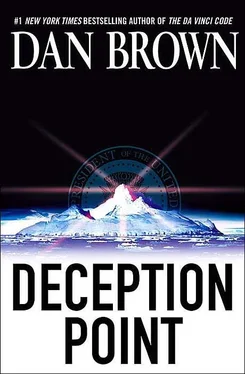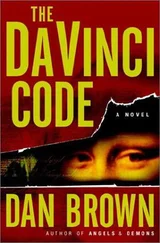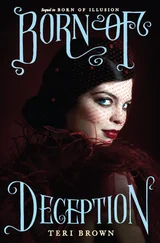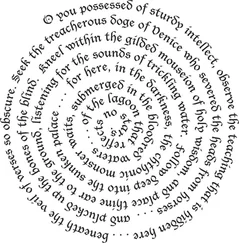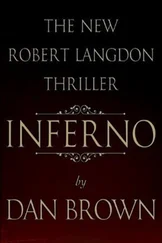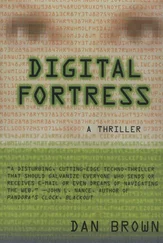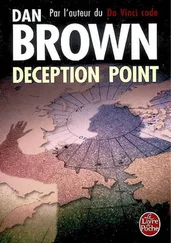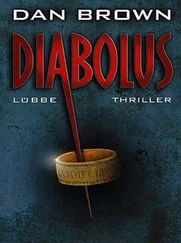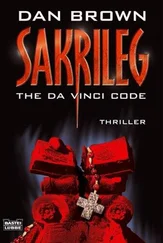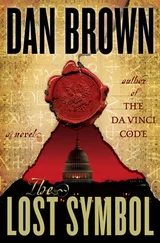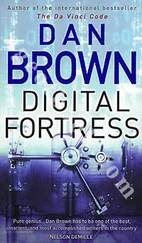“I wear clip-ons!” a nasal, good-natured voice barked nearby. “Efficiency over style, Mike. You Hollywood types don’t understand that!”
Rachel and Tolland turned to the man now emerging from behind a large stack of electronic gear. He was squat and rotund, resembling a pug dog with bubble eyes and a thinning, comb-over haircut. When the man saw Tolland standing with Rachel, he stopped in his tracks.
“Jesus Christ, Mike! We’re at the friggin’ North Pole and you still manage to meet gorgeous women. I knew I should have gone into television!”
Michael Tolland was visibly embarrassed. “Ms. Sexton, please excuse Dr. Marlinson. What he lacks in tact, he more than makes up for in random bits of totally useless knowledge about our universe.”
Corky approached. “A true pleasure, ma’am. I didn’t catch your name.”
“Rachel,” she said. “Rachel Sexton.”
“Sexton?” Corky let out a playful gasp. “No relation to that shortsighted, depraved senator, I hope!”
Tolland winced. “Actually, Corky, Senator Sexton is Rachel’s father.”
Corky stopped laughing and slumped. “You know, Mike, it’s really no wonder I’ve never had any luck with the ladies.”
Prize-winning astrophysicist Corky Marlinson ushered Rachel and Tolland into his work area and began sifting through his tools and rock samples. The man moved like a tightly wound spring about to explode.
“All right,” he said, quivering excitedly, “Ms. Sexton, you’re about to get the Corky Marlinson thirty-second meteorite primer.”
Tolland gave Rachel a be-patient wink. “Bear with him. The man really wanted to be an actor.”
“Yeah, and Mike wanted to be a respected scientist.” Corky rooted around in a shoebox and produced three small rock samples and aligned them on his desk. “These are the three main classes of meteorites in the world.”
Rachel looked at the three samples. All appeared as awkward spheroids about the size of golf balls. Each had been sliced in half to reveal its cross section.
“All meteorites,” Corky said, “consist of varying amounts of nickel-iron alloys, silicates, and sulfides. We classify them on the basis of their metal-to-silicate ratios.”
Rachel already had the feeling Corky Marlinson’s meteorite “primer” was going to be more than thirty seconds.
“This first sample here,” Corky said, pointing to a shiny, jet-black stone, “is an iron-core meteorite. Very heavy. This little guy landed in Antarctica a few years back.”
Rachel studied the meteorite. It most certainly looked otherworldly—a blob of heavy grayish iron whose outer crust was burned and blackened.
“That charred outer layer is called a fusion crust,” Corky said. “It’s the result of extreme heating as the meteor falls through our atmosphere. All meteorites exhibit that charring.” Corky moved quickly to the next sample. “This next one is what we call a stony-iron meteorite.”
Rachel studied the sample, noting that it too was charred on the outside. This sample, however, had a light-greenish tint, and the cross section looked like a collage of colorful angular fragments resembling a kaleidoscopic puzzle.
“Pretty,” Rachel said.
“Are you kidding, it’s gorgeous !” Corky talked for a minute about the high olivine content causing the green luster, and then he reached dramatically for the third and final sample, handing it to Rachel.
Rachel held the final meteorite in her palm. This one was grayish brown in color, resembling granite. It felt heavier than a terrestrial stone, but not substantially. The only indication suggesting it was anything other than a normal rock was its fusion crust—the scorched outer surface.
“This,” Corky said with finality, “is called a stony meteorite. It’s the most common class of meteorite. More than ninety percent of meteorites found on earth are of this category.”
Rachel was surprised. She had always pictured meteorites more like the first sample—metallic, alien-looking blobs. The meteorite in her hand looked anything but extraterrestrial. Aside from the charred exterior, it looked like something she might step over on the beach.
Corky’s eyes were bulging now with excitement. “The meteorite buried in the ice here at Milne is a stony meteorite—a lot like the one in your hand. Stony meteorites appear almost identical to our terrestrial igneous rocks, which makes them tough to spot. Usually a blend of lightweight silicates—feldspar, olivine, pyroxene. Nothing too exciting.”
I’ll say, Rachel thought, handing the sample back to him. “This one looks like a rock someone left in a fireplace and burned.”
Corky burst out laughing. “One hell of a fireplace! The meanest blast furnace ever built doesn’t come close to reproducing the heat a meteoroid feels when it hits our atmosphere. They get ravaged!”
Tolland gave Rachel an empathetic smile. “This is the good part.”
“Picture this,” Corky said, taking the meteorite sample from Rachel. “Let’s imagine this little fella is the size of a house.” He held the sample high over his head. “Okay... it’s in space... floating across our solar system... cold-soaked from the temperature of space to minus one hundred degrees Celsius.”
Tolland was chuckling to himself, apparently already having seen Corky’s reenactment of the meteorite’s arrival on Ellesmere Island.
Corky began lowering the sample. “Our meteorite is moving toward earth... and as it’s getting very close, our gravity locks on... accelerating... accelerating...”
Rachel watched as Corky sped up the sample’s trajectory, mimicking the acceleration of gravity.
“Now it’s moving fast,” Corky exclaimed. “Over ten miles per second—thirty-six thousand miles per hour! At 135 kilometers above the earth’s surface, the meteorite begins to encounter friction with the atmosphere.” Corky shook the sample violently as he lowered it toward the ice. “Falling below one hundred kilometers, it’s starting to glow! Now the atmospheric density is increasing, and the friction is incredible! The air around the meteoroid is becoming incandescent as the surface material melts from the heat.” Corky started making burning and sizzling sound effects. “Now it’s falling past the eighty-kilometer mark, and the exterior becomes heated to over eighteen hundred degrees Celsius!”
Rachel watched in disbelief as the presidential award–winning astrophysicist shook the meteorite more fiercely, sputtering out juvenile sound effects.
“Sixty kilometers!” Corky was shouting now. “Our meteoroid encounters the atmospheric wall. The air is too dense! It violently decelerates at more than three hundred times the force of gravity!” Corky made a screeching braking sound and slowed his descent dramatically. “Instantly, the meteorite cools and stops glowing. We’ve hit dark flight! The meteoroid’s surface hardens from its molten stage to a charred fusion crust.”
Rachel heard Tolland groan as Corky knelt on the ice to perform the coup de grвce—earth impact.
“Now,” Corky said, “our huge meteorite is skipping across our lower atmosphere...” On his knees, he arched the meteorite toward the ground on a shallow slant. “It’s headed toward the Arctic Ocean... on an oblique angle... falling... looking almost like it will skip off the ocean... falling... and...” He touched the sample to the ice. “BAM!”
Rachel jumped.
“The impact is cataclysmic! The meteorite explodes. Fragments fly off, skipping and spinning across the ocean.” Corky went into slow motion now, rolling and tumbling the sample across the invisible ocean toward Rachel’s feet. “One piece keeps skimming, tumbling toward Ellesmere Island...” He brought it right up to her toe. “It skips off the ocean, bouncing up onto land...” He moved it up and over the tongue of her shoe and rolled it to a stop on top of her foot near her ankle. “And finally comes to rest high on the Milne Glacier, where snow and ice quickly cover it, protecting it from atmospheric erosion.” Corky stood up with a smile.
Читать дальше
